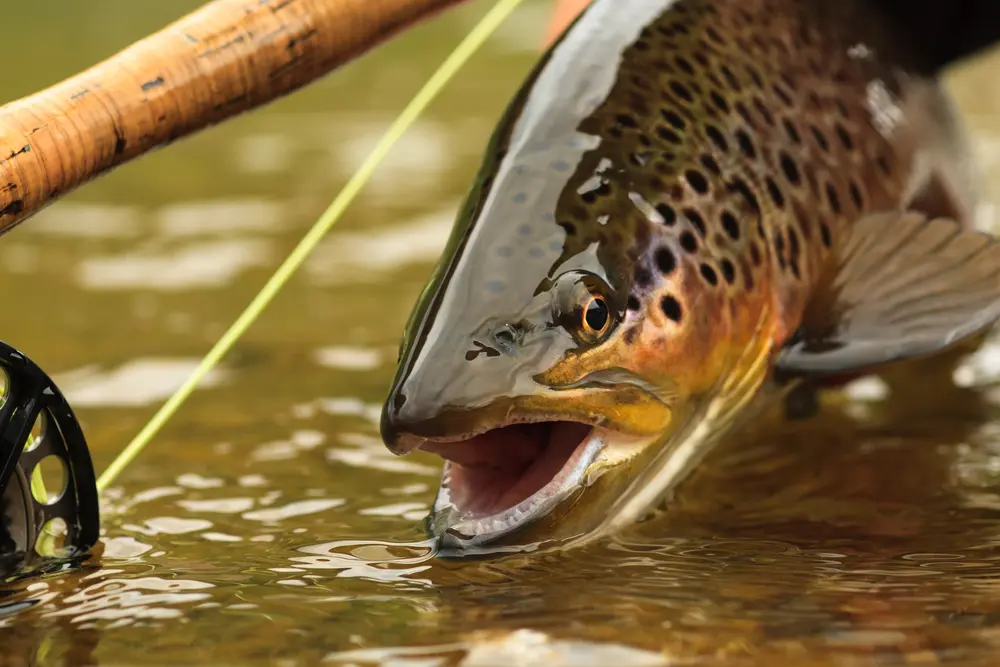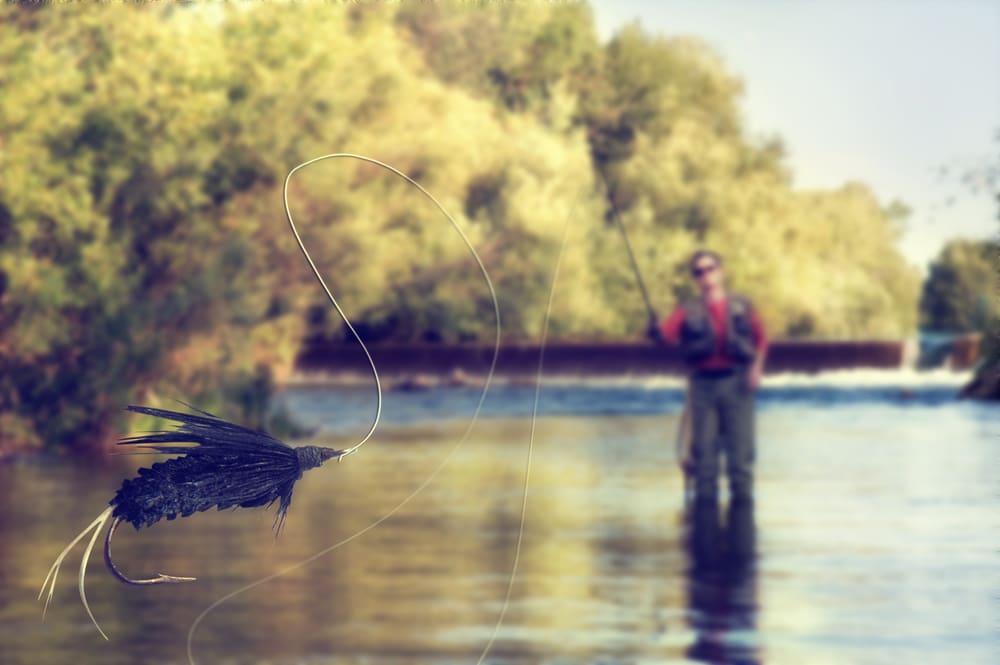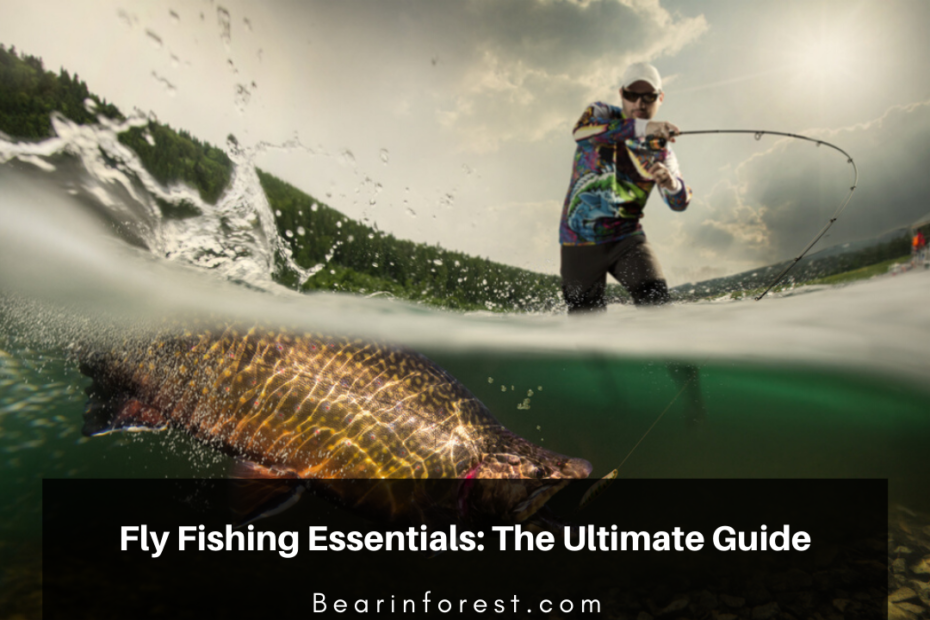For someone who just started fly fishing, preparing for their first trip out can be overwhelming. There is a lot of gear and expertise required for a successful fly fishing excursion. Going out with a professional or an experienced fly fisherman is a great way to learn about the sport of fly fishing and the necessary gear to bring along.
If you're heading out alone and are new to this type of fishing, you'll need to know some fly fishing essentials, starting with some basics about the sport itself.
Technical Basics
The type of fly fishing gear you'll need depends on the kind of fly fishing you're aiming to do.
With conventional fishing, the angler casts a light line attached to a heavier weight or lure at the end. When fly fishing, you cast a heavier line first and your lure or fly follows.
Like conventional fishing, there are a few variations to fly fishing – wet, dry and steamer.
Wet Fly Fishing: For this type of fly fishing, the angler is going for trout or other warm-water species of fish. For this technique, a fisherman casts a lure and lets it sink so that it floats on the currents just below the surface, like a subaquatic insect might.
Dry Fly Fishing: An angler casts a lighter fly onto the top of the water and lets it float along the currents. This type of fly fishing is most frequently used to bag trout and is the best option for beginners because you can see when a trout hits, whereas, with wet flies, you feel it through the rod.
Streamer Fly Fishing: This type of casting catches the larger varieties of fish that anglers go for: trout, warm-water fish, and cold-water fish. A fisherman casts a sinking fly and then moves it to mimic baitfish swimming through the currents or still waters.
Along with the different techniques you may use, you need to choose the right fishing apparel and gear for your expedition.

Flies and Fly Box
You can't go fly fishing without flies. Three types of flies match with three different techniques – dry flies, nymphs, and streamers.
Dry flies float on top of the surface and are mainly used to catch trout. Floating just under the surface, nymphs mimic the larval stages of certain insects. And streamers imitate baitfish, the preferred prey of larger fish.
Check with a local guide or carp fishing baits shop to see which flies work best in the season and area you plan to fish. Depending on your location, you may be trying to attract salmon, trout, carp, and even marine fish, like striped bass and tarpon.
A fly box keeps your flies organized and on display. If you need a quick fly change, you'll need to have your flies at the ready.
Fly Rod
Your fly rod will be the most important and the most expensive item on your equipment list. As a beginner, you may not want to lay down a chunk of money on a new rod. However, it is easier to cast with an expensive rod than it is with a cheap, poorly made one.
Fly rods come in different weights, and this specification refers to the weight of the line they are designed to cast. You want to buy a rod that has the same number (or one lower) of the weight of the line you plan on using.
Most rods break up into two or four pieces for easy transport.
Fly Reel
Many anglers posit that your reel is as essential a piece of equipment as your rod. There are others, however, that argue the reel does little more than hold their line in place. These anglers most likely strip their line instead of reel it in.
Reels come with different diameters, referred to as arbor sizes. Your local fly shop expert can help determine which size will work best depending on what type of fishing you plan on doing and the kind of line you'll cast.
Reels come in two different types, based on the drag system they use – click-and-pawl drag and disc drag. These designations determine how quickly the line can be pulled from the reel and how fast it can be reeled in.
For the beginner, a click-and-pawl reel will suffice, as they are cheaper and maintain great quality. The other option is to buy removable spools. You can put different lines on various spools and swap them out to explore which lines you like to cast the most.

Fly Line
Unlike conventional fishing, fly lines are more weighted at the front end where the fly is attached. When you cast, you propel the fly through the air to land directly in the vicinity of lurking fish.
Just like rods, different lines come with specific weights. Ensure you're using a line that's the same weight or one level heavier than your rod.
As a beginner, cast with a line that floats on the water's surface. Some lines sink slowly or quickly, depending on the type. For the same reason that beginners should start with dry fly fishing, look for a line that floats so you can keep track of your casts.
Leaders
The fly line is weighted to help propel the fly through the air since the fly itself is too light to do so. The thickness of the line determines its weight and also makes it challenging to attach directly to the fly itself, so you need a leader.
A leader is a length of clear monofilament that is thicker where it attaches to the line and thinner where it attaches to your fly. It is invisible to the fish and comes in lengths of 7-12 feet. Shorter leaders help you control heavier flies like streamers or nymphs.
Tippet
A tippet helps extend the life of your leader through a long day of multiple fly changes. If you plan on using a tippet, make sure it matches the width of your line and tapers respectively to the lure.
Fishing Apparel
Having the right fishing apparel for the season and area in which you're fishing is of paramount importance. Making sure that you are warm enough, cool enough, or dry enough is as important as keeping your flies organized or choosing the right line for your rod.
Shirts that have breathability and wick away moisture are essential parts of your fly fishing gear. You can also find fishing apparel that has built-in sun protection.
Since you are on the water, possibly in the hot sun, it's wise to protect your eyes, not only from the direct rays but also from the glare off the water. Bring a hat and sunglasses, so your eyes don't ache by day's end.
Final Thoughts
Fly fishing is a sport and an art that has been enjoyed by anglers worldwide for hundreds of years. It puts you right in the middle of some of the most gorgeous vistas in the country and blends skill with highly technical gear.
If you're thinking of picking up this sport as a new pastime, outfit yourself well, do your research, and enjoy the experience whether you are fishing in a mountain stream, a pond, a lake, or from the shore.
